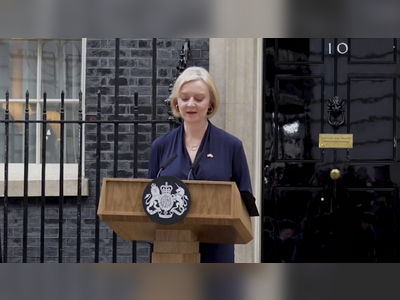UK Upholds Firm Rules on Stablecoins to Shield Financial System
Bank of England warns diluting stablecoin regulations could trigger credit crunch and signals distinct UK path from US
The Bank of England has issued a stern warning that weakening regulation of stablecoins could pose serious risks to the United Kingdom’s financial stability and precipitate a credit crunch.
Deputy Governor Sarah Breeden said on Tuesday that the regulatory framework being developed must reflect the UK’s unique banking-centric system, rather than simply mirror that of the United States.
The central bank on Monday published draft rules for so-called systemic stablecoins—digital tokens designed for widespread payments use and pegged to fiat currency.
Key elements include a temporary cap of £20,000 per individual holder and £10 million per business, and a requirement that issuers hold 40 per cent of their backing assets in unremunerated deposits at the Bank of England.
Breeden explained that the 40 per cent requirement is grounded in lessons from past banking and crypto stress events—including the 2023 collapse of Silicon Valley Bank and the de-pegging of the USDC stablecoin—where rapid withdrawal of funds triggered broader instability.
She stressed that because some 85 per cent of consumer borrowing in Britain is bank-financed, rapid outflows into stablecoins could damage credit flows.
While the proposals mark a softening relative to the 2023 plan—then envisaging 100 per cent unremunerated deposits at the bank—the three-year-old blueprint prompted industry backlash.
The new consultation allows up to 60 per cent of backing assets to be held as short-term UK Government debt, and up to 95 per cent for newer issuers during transition.
The Bank of England hopes to finalise the regime by late 2026.
Breeden also defended the unique caps on holdings, noting that other major jurisdictions do not impose such limits but arguing that the UK’s reliance on bank deposits justifies a cautious approach.
She signalled the limits will be lifted once confidence is achieved that stablecoins no longer threaten deposit flows or credit creation.
The Bank reiterated that it will regulate only systemic stablecoins—those used broadly in payments—while the Financial Conduct Authority will continue to oversee smaller-scale tokens.
Breeden also raised concerns over coins issued from less regulated jurisdictions such as El Salvador, saying there remains work to clarify which instruments are safe for UK users.
The draft regime and warnings come amid global competition to set the rules for digital money and reflect the UK’s ambition to remain influential in the evolving financial-technology landscape.
For now, regulators in London are signalling a stance that marries innovation with prudence and a willingness to diverge from the American model where necessary.
Deputy Governor Sarah Breeden said on Tuesday that the regulatory framework being developed must reflect the UK’s unique banking-centric system, rather than simply mirror that of the United States.
The central bank on Monday published draft rules for so-called systemic stablecoins—digital tokens designed for widespread payments use and pegged to fiat currency.
Key elements include a temporary cap of £20,000 per individual holder and £10 million per business, and a requirement that issuers hold 40 per cent of their backing assets in unremunerated deposits at the Bank of England.
Breeden explained that the 40 per cent requirement is grounded in lessons from past banking and crypto stress events—including the 2023 collapse of Silicon Valley Bank and the de-pegging of the USDC stablecoin—where rapid withdrawal of funds triggered broader instability.
She stressed that because some 85 per cent of consumer borrowing in Britain is bank-financed, rapid outflows into stablecoins could damage credit flows.
While the proposals mark a softening relative to the 2023 plan—then envisaging 100 per cent unremunerated deposits at the bank—the three-year-old blueprint prompted industry backlash.
The new consultation allows up to 60 per cent of backing assets to be held as short-term UK Government debt, and up to 95 per cent for newer issuers during transition.
The Bank of England hopes to finalise the regime by late 2026.
Breeden also defended the unique caps on holdings, noting that other major jurisdictions do not impose such limits but arguing that the UK’s reliance on bank deposits justifies a cautious approach.
She signalled the limits will be lifted once confidence is achieved that stablecoins no longer threaten deposit flows or credit creation.
The Bank reiterated that it will regulate only systemic stablecoins—those used broadly in payments—while the Financial Conduct Authority will continue to oversee smaller-scale tokens.
Breeden also raised concerns over coins issued from less regulated jurisdictions such as El Salvador, saying there remains work to clarify which instruments are safe for UK users.
The draft regime and warnings come amid global competition to set the rules for digital money and reflect the UK’s ambition to remain influential in the evolving financial-technology landscape.
For now, regulators in London are signalling a stance that marries innovation with prudence and a willingness to diverge from the American model where necessary.









